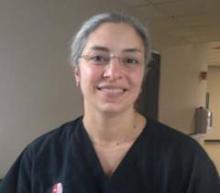Obstetrics and gynecology was a popular choice for medical students in the 2015 Main Residency Match, filling all of the 1,255 positions available.
Ob.gyn. joined dermatology, medicine-psychiatry, orthopedic surgery, thoracic surgery, pediatric-primary care, and physical medicine/rehabilitation as the only first-year programs offering at least 20 positions in the Match that filled all of their residency spots, according to data from the National Resident Matching Program.
Of the 1,255 residency positions offered in ob.gyn., 79.8% were filled by U.S. medical graduates. Over the past 5 years, both the overall fill rate and the percentage of residency positions filled by U.S. graduates have gradually increased: In 2011, 99.1% of the 1,200 positions were filled, with 74.3% filled by U.S. graduates.
The appeal of the specialty is easy to see, according to Dr. Todd Griffin, chair of the department of obstetrics, gynecology and reproductive medicine at Stony Brook University School of Medicine (N.Y.).
“Ob.gyn. is becoming a more popular field again,” Dr. Griffin said. “I think people are really understanding what the field is and all the different opportunities within it.”
Advances in surgery, from robotics to advanced laparoscopy, have made ob.gyn. more appealing for students with an interest in surgery, he said, and changing attitude about lifestyle has also made the specialty more attractive.
“When you graduate, there’s more focus on work-life balance,” he said. “That’s made it much more attractive for candidates.”
The rising interest in ob.gyn. means that residency directors have their pick of the top candidates. Dr. Melissa Henretta, the director of the ob.gyn. residency program at Stony Brook University, said that her program accepts five new residents each year. This year they received approximately 400 applications and interviewed about 80 students.
“We’ve got a great group of really strong people,” she said.
Dr. Griffin said he’s hearing the same thing from ob.gyn. department chairs around the country.
“It seems that more and more of the top students are choosing ob.gyn., which I think it is great,” he said. “I think it’s great for women’s health going forward. Hopefully that’s because we’re giving them the right experience in medical school.”
Workforce concerns remain
Despite the high fill rate, leaders in obstetrics and gynecology are still concerned about shortages, especially in rural and underserved areas.
“There’s a tremendous geographic maldistribution of our graduates,” said Dr. John C. Jennings, president of the American Congress of Obstetricians and Gynecologists. “We’ve got to do something to correct that.”
A 2011 workforce report commissioned by ACOG cited a shortage of ob.gyns. of somewhere between 18% (about 9,000 physicians) and 25% (about 15,000 physicians) by 2030, depending on the number of years a physician spends in practice. Already nearly half of the 3,107 counties in the U.S. are without an ob.gyn. The shortages are predominantly in rural areas in the Midwest and the Mountain West, though shortages exist in all states, according to the report.
One of the problems, Dr. Jennings said, is that the number of ob.gyn. residency positions has been “stagnant” since Congress restricted Medicare funding for graduate medical education in the Balanced Budget Act of 1997. That means that teaching hospitals must fund the high-cost of training ob.gyns. on their own if they want to increase the positions they offer.
In ob.gyn., though there have been small fluctuations from year to year, the overall number of residency slots has remained around 1,200 for the last 30 years, according to the report.
“This year, we were unable to accommodate a large number of medical students who applied to ob.gyn. programs,” Dr. Jennings said. “The number of unmatched ob.gyn. applicants shows the need for more ob.gyn. residencies in the U.S. More ob.gyn. residencies would allow us to better meet the growing needs of American women.”
Another issue is that about a quarter of residents will enter subspecialty training programs, taking them out of the pool of physicians addressing general women’s health issues and providing prenatal care, Dr. Jennings said. And another 20% to 25% will “self-specialize” by restricting their practice to outpatient gynecology or becoming laborists, he added.
One possible solution comes in the form of new federal legislation, the Improving Access to Maternity Care Act (H.R. 1209), which would designate maternity care shortage areas under the Public Health Service Act, allowing providers in the National Health Service Corps to serve in medical facilities in these shortage areas. These shortage designations already exist for primary care, dental care, and mental health.




